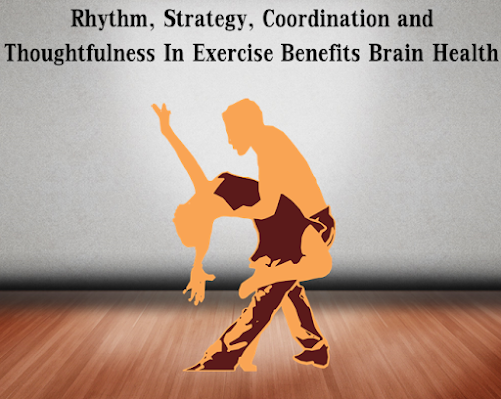Regular exercise, a healthy diet, and taking care of our emotional wellbeing are all-important elements of living a healthy lifestyle and maintaining an optimal level of health. Medical experts and research has confirmed repeatedly that the lifestyle choices we make are crucial for healthy aging, and preventing various diseases that can result in premature death.
However, prevention goes a step beyond, with preventative medical care that can alert both men and women to various medical conditions that can lead to serious complications that can affect health and shorten one’s lifespan. Early detection and monitoring for high-risk conditions is an essential element of good healthcare.
When it comes to healthcare, men tend to see doctors less and do not pay as much attention to their possible health concerns as women do. They can often go years between doctors’ visits—missing valuable opportunities for screening and detection of possible physical diseases.
Here are some health concerns worth keeping on top of so that you don’t end up with unnecessary complications:
- High blood pressure: Men are just as prone to high blood pressure as women. High blood pressure is largely hereditary but can be influenced by environmental factors such as caffeine intake, intake of salt, and obesity. Unless the blood pressure is extremely high, you will have no symptoms and the blood pressure will be left unchecked and unnoticed. Visit your doctor every five years or so to have your blood pressure obtained. Try to check your blood pressure at stations found in most pharmacies. Numbers of 140/90 or greater bear a visit to your doctor.
- Colon cancer: Colon cancer is the second largest cause of cancer death among men. Fortunately, it is largely preventable by being screened for colon cancer, beginning at age 50 (and sooner if it runs in the family). It involves having a colorectal specialist insert a camera at the end of a flexible tube into the colon to look for and remove cancer-causing polyps. This procedure is called a colonoscopy and it should be repeated every ten years as a screening measure, starting at 50 years of age. Keeping a high fiber diet that is low in fat can also reduce the risks of colon cancer.
- Prostate Cancer: Prostate cancer is the second most common cancer in men, after skin cancer. Doctors know that there are basically two types of prostate cancer—slow growing and fast growing. Either way, it is worth getting screened for prostate cancer through the use of digital rectal examination every five years at the doctor’s office. Some doctors also draw blood for prostate specific antigen or PSA. This number can be high in enlarged prostate conditions or in prostate cancer. If it is elevated, doctors can try and determine if it is related to cancer or not.
- Smoking Cessation: Lung cancer caused by smoking is the number one cause of cancer deaths in America. The simplest way to reduce your risk of lung cancer is to never smoke or to stop smoking as soon as possible. There are many ways to quit smoking, including medications like Chantix® or nicotine replacement modalities. Gum, lozenges and patches are available that contain nicotine to help you get off the smoking habit. There are even vapor cigarettes that can provide nicotine but not the harmful carcinogens. The Centers For Disease Control recommend only one screening test for lung cancer, known as the low-dose computed tomography, through the test is not always accurate and has its own risk factors. The LDCT uses an X-ray machine that scans the body and uses low doses of radiation to created detailed pictures of the lungs.
The CDC recommends yearly lung screenings for those who: have a history of heavy smoking, smoke now or have quit within the last 15 years and are between 55 and 80 years old. Heavy smoking is defined as smoking at least one pack of cigarettes per day for one year. A 30 pack-year history can equate to 1 pack a day for 30 years or two packs a day for 15 years.
- Heart Disease: Men are at a greater risk of heart disease than women are and must begin making strides toward lowering their risk early in life. Things like high cholesterol, high blood pressure, obesity, lack of exercise, and family history contribute to a high risk of heart disease. Especially with men who have family histories, measures should be taken to reduce the other risk factors. This means adopting a heart healthy diet high in fruits and vegetables and low in fat. It means a commitment to exercise at least thirty minutes per day, five days a week. Finally it means seeing a doctor to find out about risk factors like high cholesterol and high blood pressure. If these are elevated, your doctor may prescribe medications that can further reduce your risk of getting a heart attack.
- The Family Connection: Besides all the conditions listed above, it is also a good idea to find out about any medical conditions that run in the family as genetics can play a big role in the development of certain diseases.
Oftentimes, children, parents, and grandparents share similar health problems because inherited factors put family members at risk through genes. Disease often results from the combined effects of minor changes in multiple genes, and each gene then contributes in a small way to the symptoms of and development of disease.
Heart disease, diabetes, and cancer account for 7 of every 10 deaths in the United States, and they are considered genetic diseases because they run in families. Gathering a detailed family history can give you important information as to your risk factors and that awareness can be used to monitor for and possibly prevent the onset of problems whenever possible.











